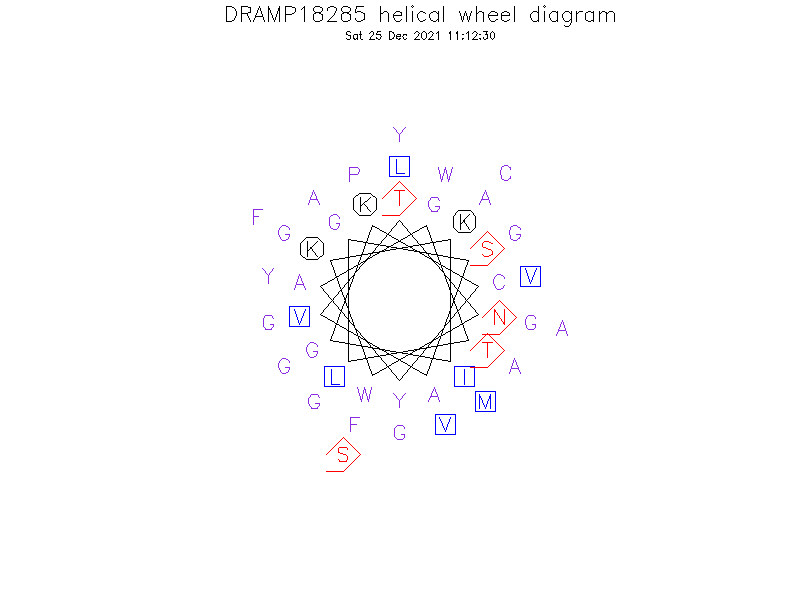General Information
-
DRAMP ID
- DRAMP18285
-
Peptide Name
- Bacteriocin LS2 (Bacteriocin)
-
Source
- Lactobacillus salivarius BGHO1
-
Family
- Belongs to the class IId bacteriocin
-
Gene
- bacls2
-
Sequence
- TNWKKIGKCYAGTLGSAVLGFGAMGPVGYWAGAGVGYASFC
-
Sequence Length
- 41
-
UniProt Entry
- I0B594
-
Protein Existence
Activity Information
-
Biological Activity
- Antimicrobial, Antibacterial, Anti-Gram+
-
Target Organism
- Gram-positive
-
Hemolytic Activity
-
- No hemolysis information or data found in the reference(s) presented in this entry
-
Cytotoxicity
-
- Not included yet
-
Binding Target
- Not found
Structure Information
-
Linear/Cyclic
- Not included yet
-
N-terminal Modification
- Not included yet
-
C-terminal Modification
- Not included yet
-
Nonterminal Modifications and Unusual Amino Acids
- Not included yet
-
Stereochemistry
- Not included yet
-
Structure
- Not found
-
Structure Description
- Not found
-
Helical Wheel Diagram
-
PDB ID
- None
-
Predicted Structure
- There is no predicted structure for DRAMP18285.
Physicochemical Information
-
Formula
- C190H279N47O50S3
Absent Amino Acids
- DEHQR
Common Amino Acids
- G
Mass
- 4117.77
PI
- 9.18
Basic Residues
- 3
Acidic Residues
- 0
Hydrophobic Residues
- 16
Net Charge
- +3
-
Boman Index
- 2702
Hydrophobicity
- 0.451
Aliphatic Index
- 64.39
Half Life
-
- Mammalian:7.2 hour
- Yeast:>20 hour
- E.coli:>10 hour
Extinction Coefficient Cystines
- 15595
Absorbance 280nm
- 389.88
Polar Residues
- 20
DRAMP18285

Comments Information
Note that the strain Lactobacillus salivarius BGHO1 exhibits a wide antimicrobial spectrum against S. flexneri, S. sonnei, S. dysenteriae, S. boydii, Y. enterocolitica, S. enteritidis, L. innocua, S. aureus, E. faecalis, M. flavus, S. pneumoniae and S. mutans. However, this broad spectrum could result from synergistic effect of its bacteriocins and the lactic acid which, in addition to the general antimicrobial effects exhibited by lowering the pH, can permeabilise the outer membrane of Gram-negative bacteria and make them more vulnerable to the effects of bacteriocins.
Literature Information
- ·Literature 1
-
Title
- Purification and genetic characterisation of the novel bacteriocin LS2 produced by the human oral strain Lactobacillus salivarius BGHO1.
-
Pubmed ID
- 22739096
-
Reference
- Int J Antimicrob Agents. 2012 Aug;40(2):127-34.
-
Author
- Busarcevic M, Dalgalarrondo M.

